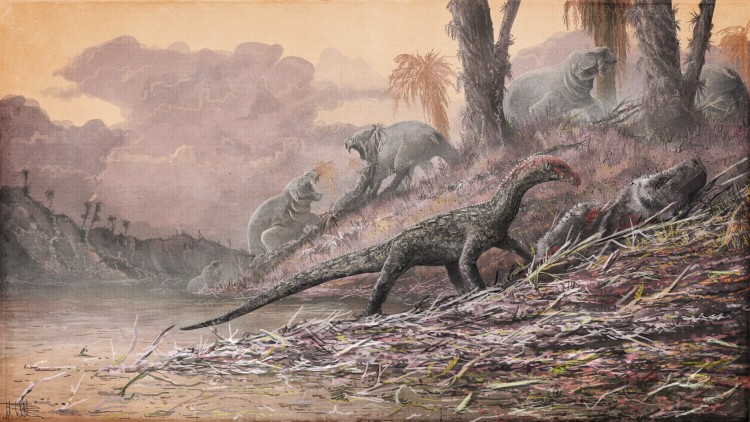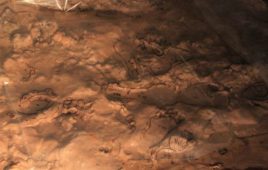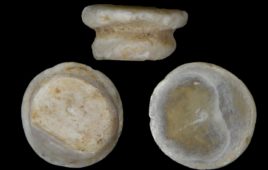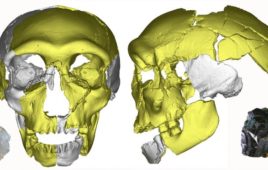
In this artist rendering, Teleocrater, an early dinosaur relative, is shown feeding on Cynognathus, while hippo-like dicynodonts look on. All of these animals lived in the mid-Triassic of Tanzania, about 240 million years ago. Credit: Mark Witton/Natural History Museum, London.
A multi-institution, 10-year plus study across the globe has shed light on the emergence of dinosaurs during the early Triassic period.
A team led by paleontologists and geologists at the University of Washington has uncovered new fossils in Zambia and Tanzania, examined previously collected fossils, and analyzed specimens in museums around the world to better understand life in the Triassic period across different geographic regions.
The researchers focused on the Southern End of the world from about 252 million to 199 million years ago during the Triassic period when the earliest mammals and reptiles lived on Pangea. In total, the researchers released 13 special edition papers and 24 additional peer-reviewed papers highlighting their findings over the multi-year study.
“Most of what we know about the major mass extinction is from the South African Karoo Basin. I was always interested in understanding, do we see the exact same pattern around the world, or do we not?” co-editor Christian Sidor, a UW biology professor and curator of vertebrate paleontology at the Burke Museum of Natural History and Culture, said in a statement. “The fossil record can be great to understand timing and sequence, but not always great at looking at things in a geographic context.”
Since 2007, Sidor and his team of students, postdoctoral researchers, paleontologists and geologists have visited the Ruhuhu Basin of Tanzania five times and the Luangwa and mid-Zambezi basins of Zambia four times. The researchers lived there for about a month at a time, often hiking for miles to find fossil sites and camping in villages and national parks.
Each site in Tanzania and Zambia contains its own collection of fossils from the Triassic and other periods. However, the goal of the project was to examine across locations a considerable distance apart to find similarities in the fossil records.
“These papers highlight what a regional perspective we now have—we have the same fossils from Tanzania, Antarctica, Namibia and more,” Sidor said. “We’re getting a much better Southern Hemisphere perspective of what’s going on in the Triassic.”
Most of the reporting from the decade-long study describe other animals that were present in the Triassic besides the early dinosaurs.
“This was a time when dinosaurs were just stepping onto the stage, and they were not very big and not very remarkable animals then,” Sidor said. “These papers really round out what dinosaurs were competing with before they became the dominant reptiles on land.”
More than 2,200 fossils were collected across Tanzania and Zambia over the last decade of fieldwork.




